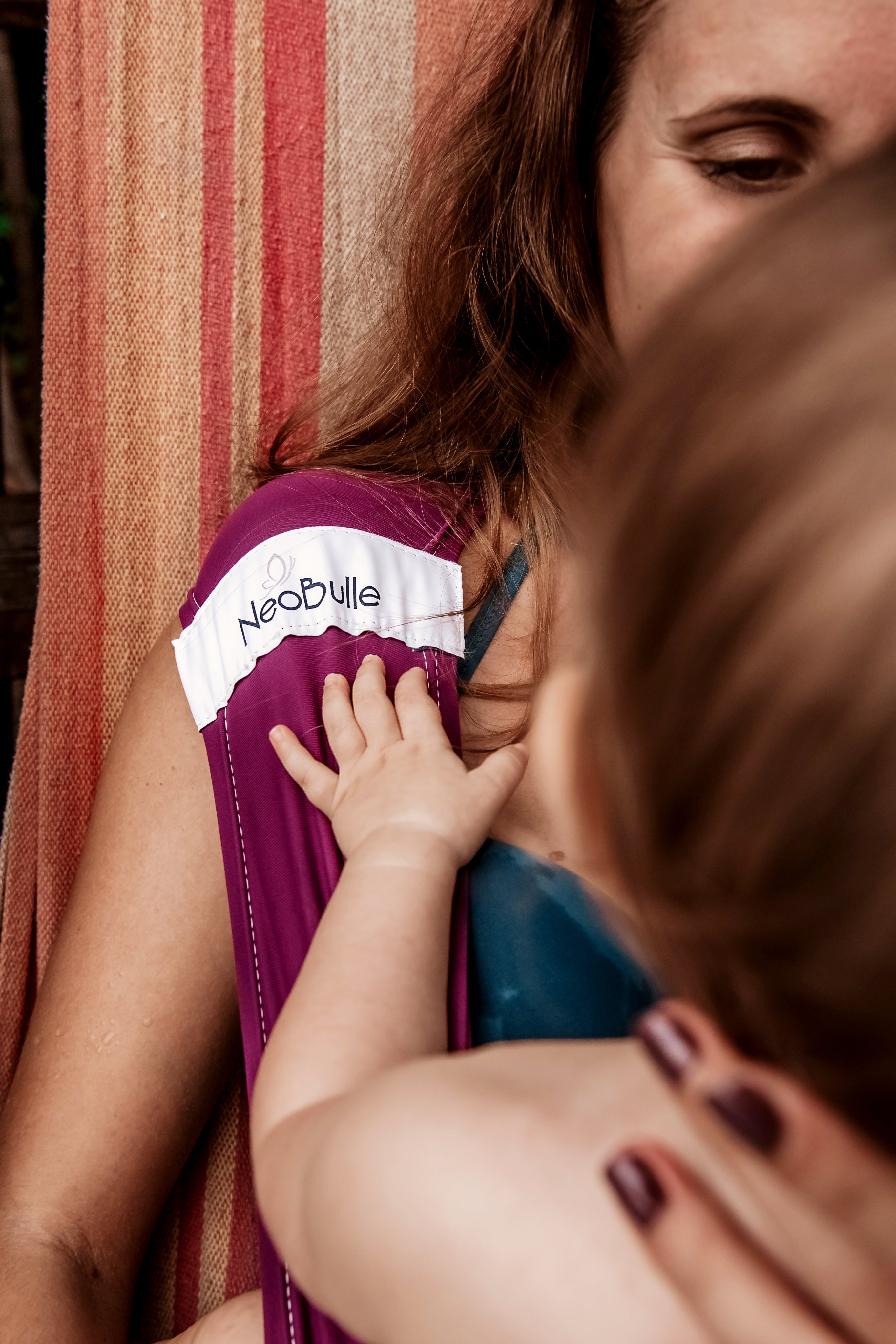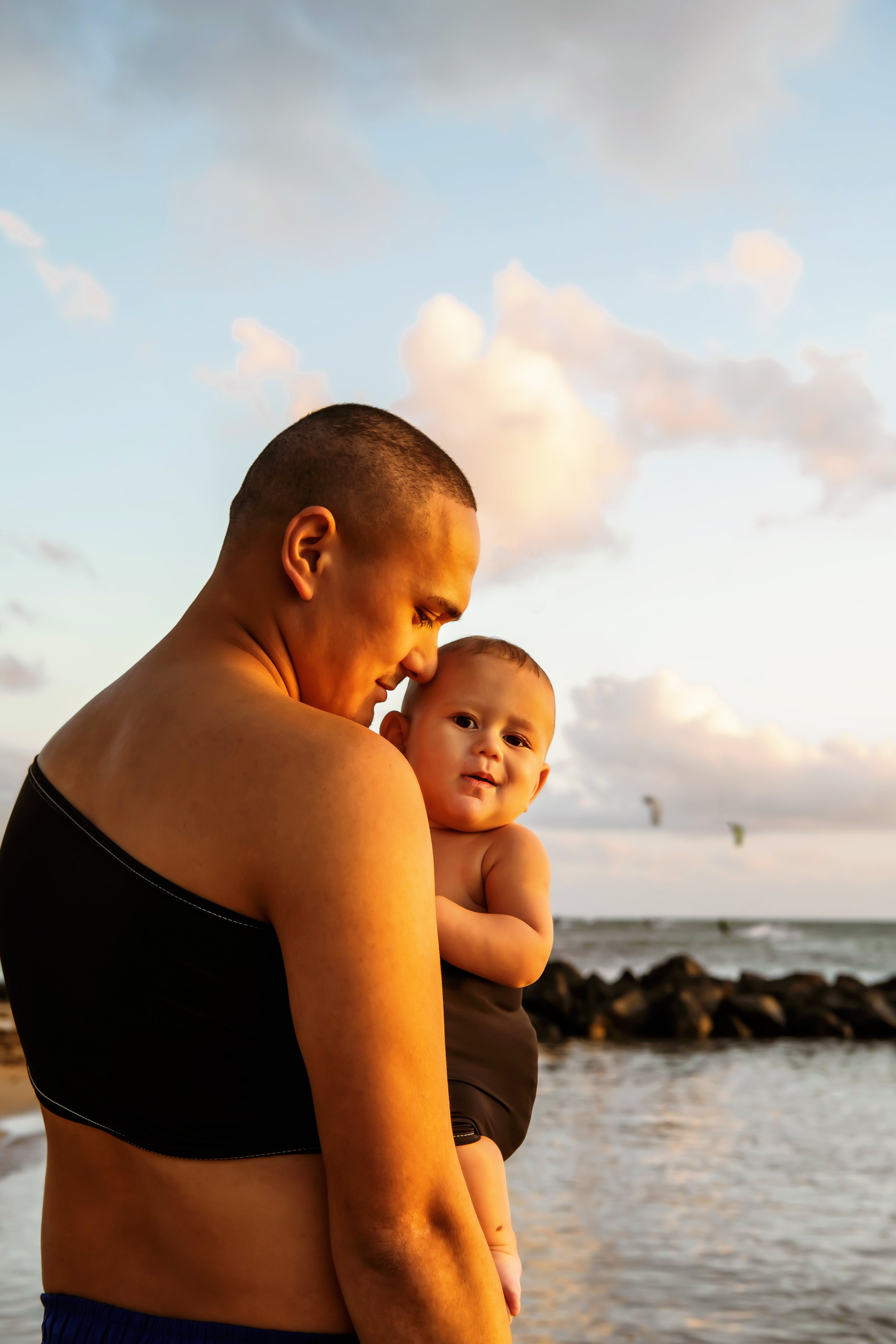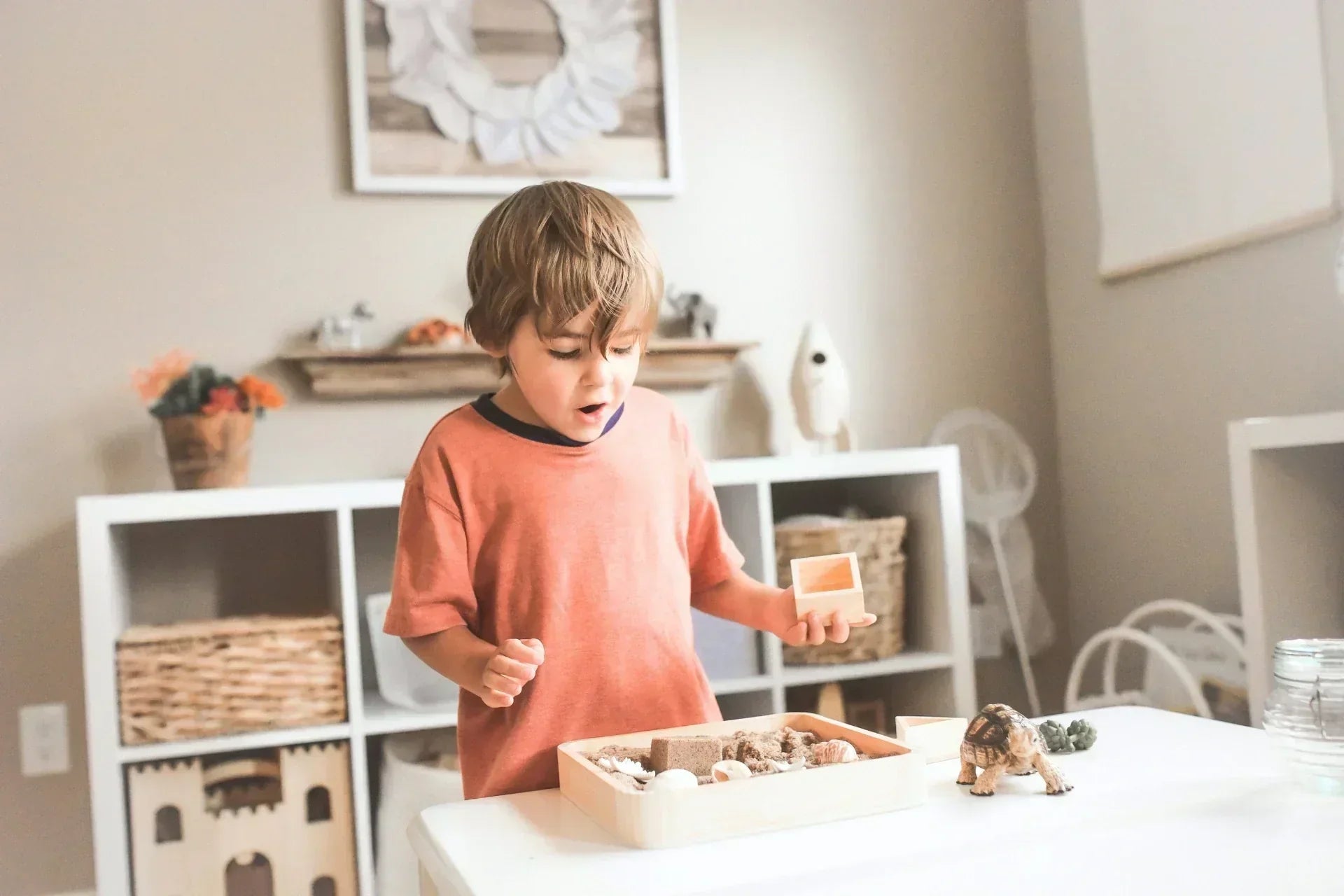Are you wondering which baby gear to choose? Which objects are truly useful and which are better to avoid, on the contrary? How, as a parent, can you support the development of your baby through your daily gestures? In this article, we guide you to make informed and tailored choices based on your child's actual needs.
The role of the environment
A reassuring environment based on rich human interactions
A large part of the baby's development unfolds depending on all the elements that make up its environment. Its diet, sleep, rhythms, living conditions, and especially its relationship with adults are crucial. The people around it therefore play a significant role, through their gaze, words, and their interaction with it. The baby feels, touches, listens, senses, opens its eyes, observes, and feeds on all the information it receives. Its brain is wired to learn and become curious. But, without relationships with loving humans, there is no development. Your role is therefore essential.
Parents are thus the first essential material for the baby's development. Indeed, the baby cannot do without them! Carry your baby, rock it, talk to it, place it in the crook of your neck, your arms, your chest, or on your knees. These gestures promote bonding, eye contact, play, communication, and stimulate its development.
The essential role of carrying in the baby's development
The physiological baby carrier, the carrying scarf, or the sling are perfect tools to support the sensory and motor development of the baby. Being close to you, the baby can fully express and develop its sensorimotor abilities.
To learn more about choosing an appropriate model, discover which preformed baby carrier to use from birth. Respecting your baby's physiology, meaning its naturally curled position, is essential.

Create a wake-up space with a mat and contrasting objects
A playmat or gym mat, where parents and babies can gather on the floor together, is very useful in the first few months. Enhance this space with colorful and contrasting objects, such as a black and white book or a frieze placed near the mat. Indeed, these contrasting elements help babies focus their attention. Make sure to change the baby's position or the objects' placement so that they don't always wake up with a toy hanging above their head, or so that they don't have toys behind them that would force them to arch their back to look at them.
Limit objects that replace human interaction

Babies understand the world around them when
they are in contact with the people who care for them. Consequently, mechanical swings that rock and play music, or music boxes reproducing parents' voices, should be used with caution. Baby development primarily relies on real, qualitative human interactions, with those who care for them daily.
💡 Want to choose a baby carrier suitable for your baby's development? Take a look at the Neobulle carriers made in France!
The first suitable toys to support baby's development
Later, baby discovers their hands, mouth, and feet. Their hands, initially closed, open and then close around objects. The first toys should be small, lightweight, and easy to grasp with small handles suitable for their hands. They can be larger if they are lightweight.
Colorful toys with varied textures
Colorful and contrasting toys are better perceived by babies from 0 to 6 months. At this age, their sensitivity is very fine. It is not necessary for their toys to make noise and light at the same time. Indeed, this could be too stimulating. Prefer objects with varied textures and shapes: hard, soft, smooth, rough. They can be varied but few in number: if there are too many stimuli, the baby becomes distracted or bored. If there are a few objects around them, they can focus on them and discover many ways to use them.
The evolution of play and motor skills in baby's development
Baby observes, grasps, passes toys from one hand to the other, releases, and throws them. Their grasp becomes more complex and precise. Over the months, their toys evolve:
- containers with contents,
- boxes to fill or empty (simple small cartons will do!),
- stacking and building blocks to knock down 1000 times,
- simple or complex insertions,
- Screwing and unscrewing elements...
Encouraging fine and gross motor skills
The practice of fine motor skills is intensifying. Your baby is catching small objects with the thumb and index finger or practicing making bead necklaces on a string. Parallel to the development of manual coordination, gross motor skills are also evolving. It is preferable to offer games or furniture that promote standing without forcing it.
Thus, during the acquisition of walking, the baby can support themselves on a small chair, a bench, or have fun with a push toy. These are wheeled toys with handles, or sometimes a box to fill. These games are very appreciated, especially if they have a brake for safety. The goal is not to surprise them by progressing too quickly. Small cars, trucks, or riding animals are also suitable.
💡 Tip: place a water pack in the small chests to weight down the push toy.
To foster interaction with the baby, ball or balloon games are excellent. They provide a timeless support. Indeed, they promote exchanges, coordination, and visual attention, and should be explored without moderation!
Finally, your baby will also enjoy moving with you, sharing walks, outdoor visits, or trips to the market. Once again, the physiological baby carrier will accompany you, perhaps on your back this time, a vantage point that babies love.

Materials to avoid: risks to baby development
Any systems that encourage the baby to stand when they are not yet able to do so themselves should be avoided. Walkers or yuppalas, for example, force an unacquired posture. Uninteresting in terms of development, they can become dangerous for the baby's safety. In short, it is preferable to support the baby's development without forcing them into a position they have not yet mastered.
Books, allies in the cognitive and emotional development of the baby
Books accompany the baby's development from the first weeks of life. Initially, black and white images captivate the infant's attention. Then, stories can very early support a moment of awakening for the little one.
Gradually, the baby will become interested, listen to the voice, look at the colors, follow the parent’s finger pointing to the images. These are supports of infinite richness that accompany them from birth to adolescence and help develop their imagination, language, vocabulary, understanding, and attention... There are no limits to the stories you can read together!
The dangers of screens for baby development
Many studies show that screens are useless or even harmful, when consumed too regularly, before age 6. The baby does not learn anything through screens. On the contrary, early use can significantly impact motor and cognitive development. It is important to understand these dangers in order to use screens wisely.
Conclusion: promote harmonious baby development with appropriate materials
You understand it: to promote baby development, prefer simple tools. A mat for everyone to lie on and do "tummy time," a carrier scarf to go everywhere with baby, and encourage interactions, balls to play together, books for quiet moments, and nature for walks!
💡To stimulate baby's vision and attention from the first weeks, discover this great DIY of contrast and shape cards for baby's awakening!
On June 30, 2025, Anne Petit-Jean Robert, psychomotor therapist (co-founder of Néobulle)





